The Mobile CPU Core-Count Debate: Analyzing The Real World
by Andrei Frumusanu on September 1, 2015 8:00 AM EST- Posted in
- Smartphones
- CPUs
- Mobile
- SoCs
Real Racing 3 Launch
Next we'll look at another real-world use-case with a popular Android game: Real Racing 3. First off we start by analyzing the launch behaviour of the app. I monitor the system from the launch up until the game starts its auto-play introduction around the 18s mark.
At first the load is fully migrated onto the big CPU cluster so we see little to no activity on the little cores. Once the initial opening is done, we see threads migrate back to the small cores.
Beyond the initial app launch, it looks like RR3 isn't too multi-threaded as we only see some short bursts on the big cores, but they never exceed a total run-queue of 1.5 during the main loading sequence.
Overall, the game's rq-depth averages around 2.5 during the main loading sequence with a larger burst of 7 threads when the 3D intro starts playing.


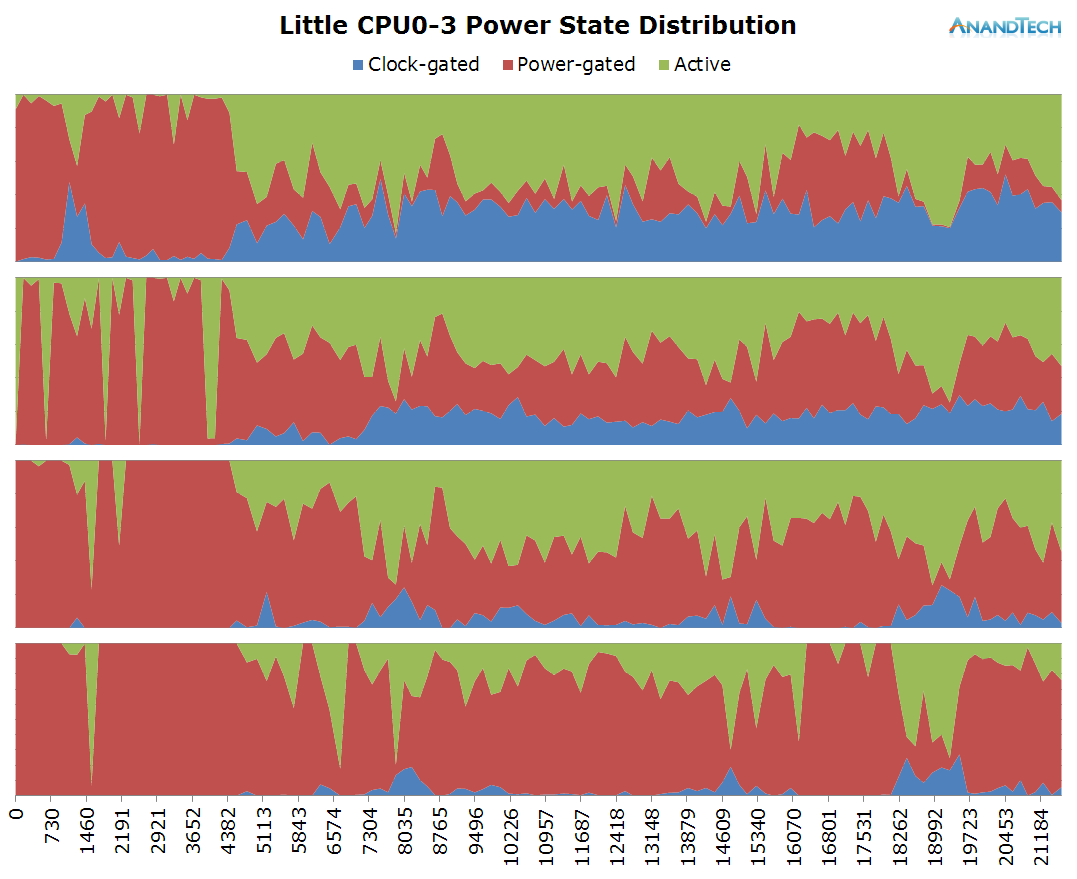
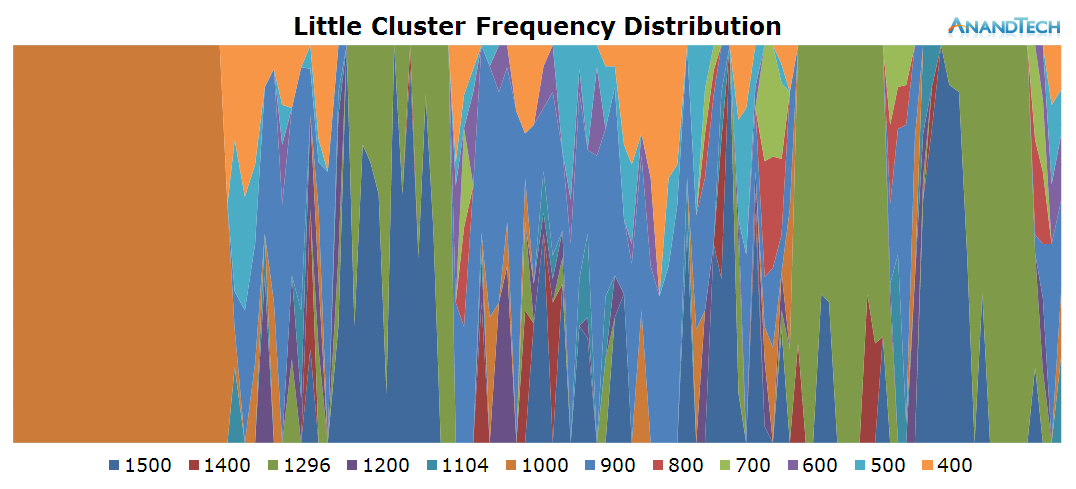
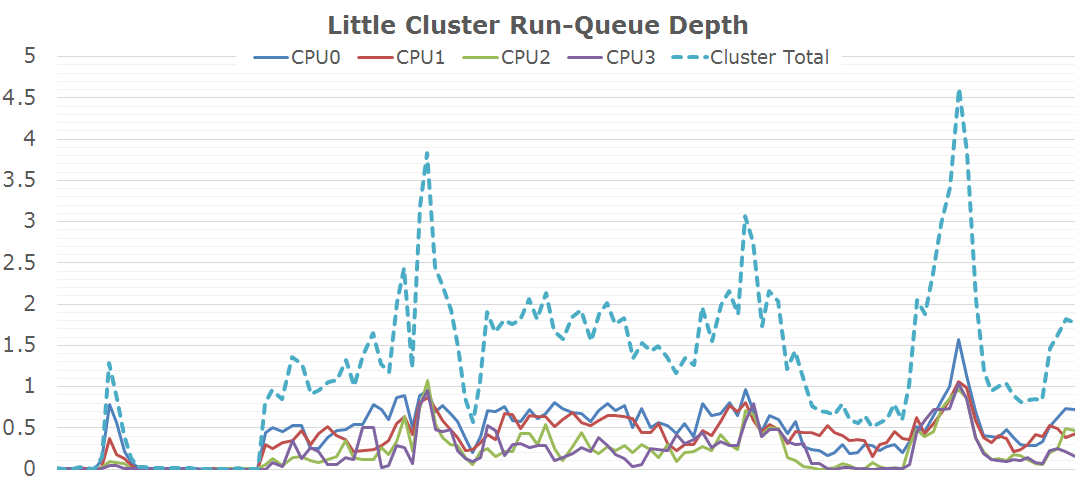
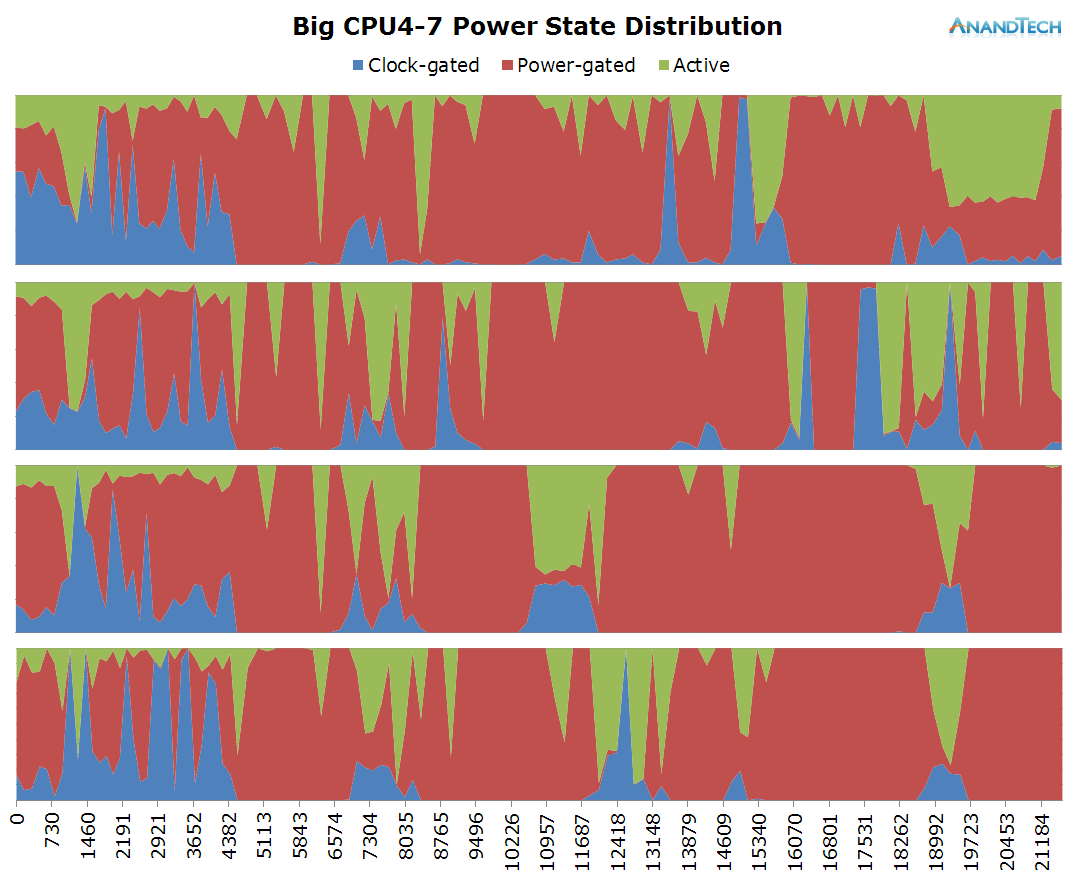

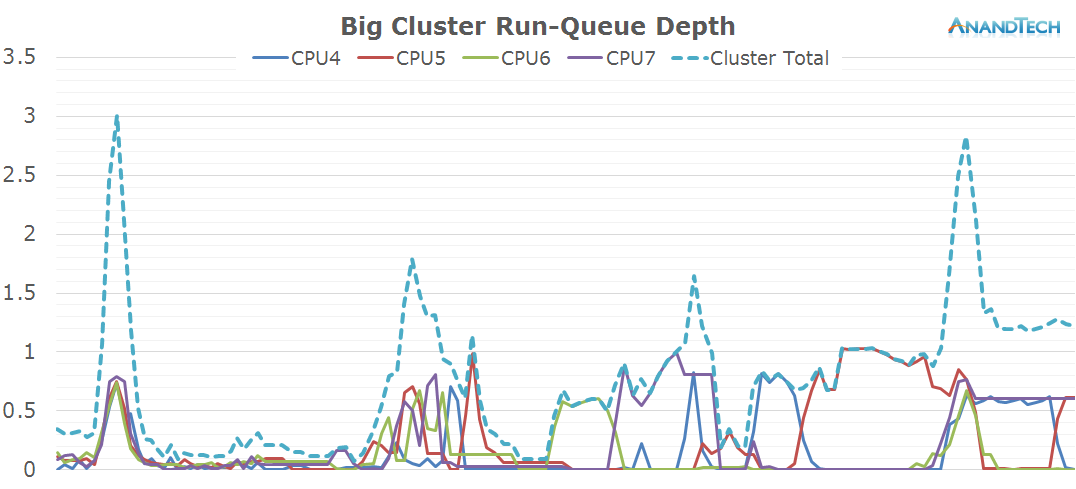









157 Comments
View All Comments
modulusshift - Tuesday, September 1, 2015 - link
Heck yes. And of course I'm interested if anything like this is even remotely possible for Apple hardware, though likely it would require jailbreaks, at least.Andrei Frumusanu - Tuesday, September 1, 2015 - link
Unfortunately basically none of the metrics measured here would be possible to extract from an iOS device.TylerGrunter - Tuesday, September 1, 2015 - link
Add one more vote for the follow up with synthetics.I would also want to see how the multitasking compares with the Snapdragons as they use the different frequency and voltage planes per core instead of the big.LITTLE.
But I guess that would be better to see with the SD 820, as the 810 uses big.LITTLE. Consider it a request for when it comes!
tuxRoller - Wednesday, September 2, 2015 - link
Big.little can use multiple planes for either cluster. The issue is purely implementation, tmk.TylerGrunter - Wednesday, September 2, 2015 - link
big.LITTLE can be use different planes for each cluster but same for all cores in each cluster, Qualcomm SoCs can use different planes for each core, that's the difference and it's a big one.https://www.qualcomm.com/news/onq/2013/10/25/power...
I'm not sure that can be done in big.LITTLE.
tuxRoller - Friday, September 4, 2015 - link
I remember that but that doesn't say that big.LITTLE can't keep each core on its own power plane just that the implementations haven't.soccerballtux - Tuesday, September 1, 2015 - link
to balance everything out-- meh, that doesn't interest me. most of the time I'm concerned with battery life and every-day performance. Android isn't a huge gaming device so absolute performance doesn't interest me.porphyr - Tuesday, September 1, 2015 - link
Please do!ppi - Tuesday, September 1, 2015 - link
Go ahead. This is one of the most interesting performance digging on this site since the random-write speeds on SSDs.jospoortvliet - Friday, September 4, 2015 - link
Yes, this was an awesome and interesting read.